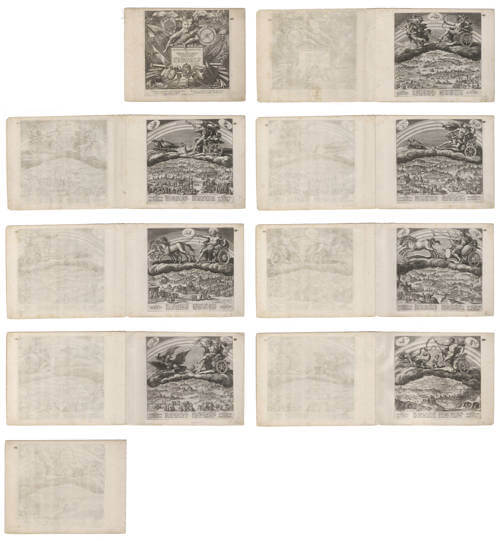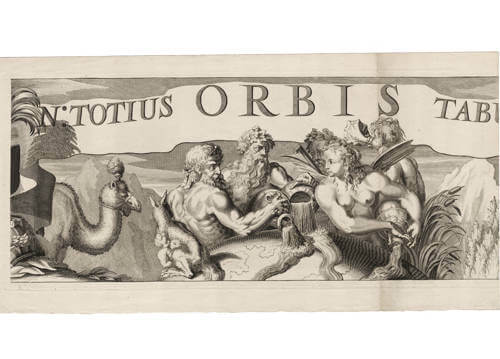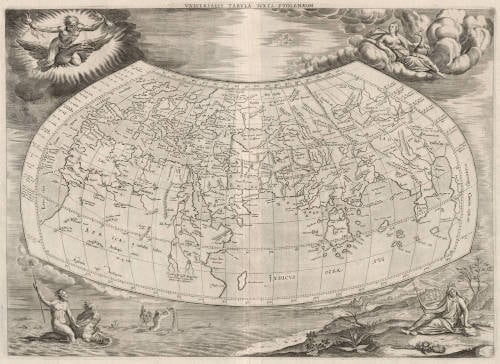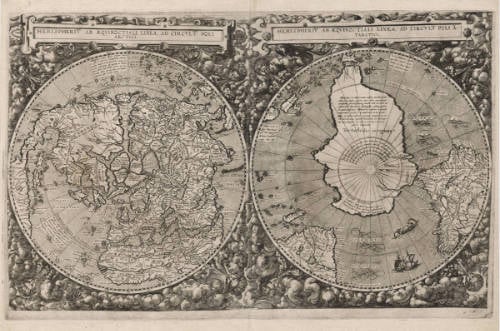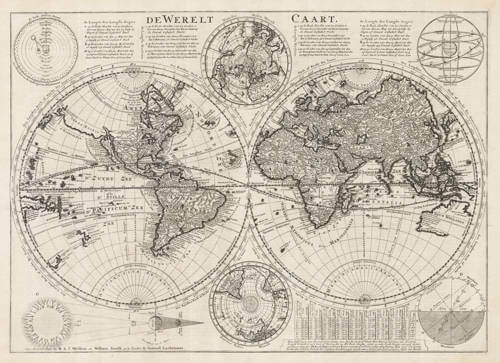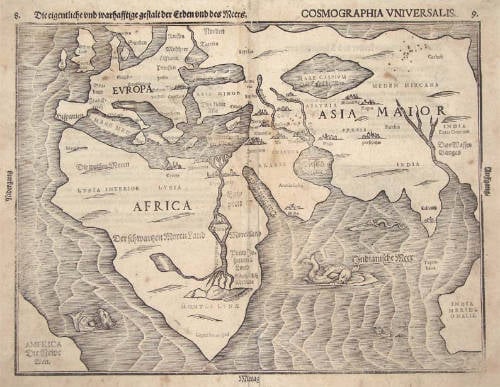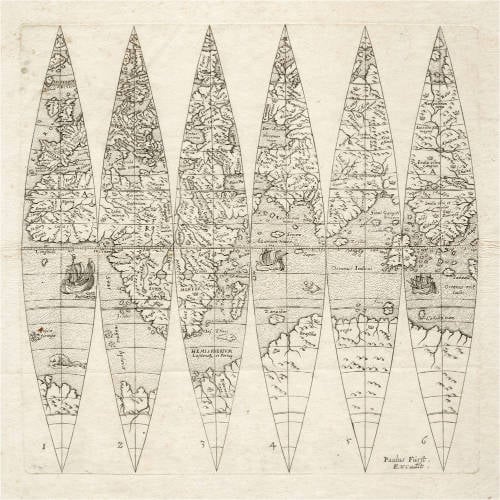Leen Helmink Antique Maps
Allegories of the seven planets by Maarten de Vos
Stock number: 19689
Zoom ImageCartographer(s)
Jan Sadeler the Elder
Title
[ The Seven Planets ]
First Published
Antwerp, 1585
This Edition
1585 First states
Size
21.3 x 26.2 cms
Technique
Condition
excellent
Price
$ 12,500.00
(Convert price to other currencies)
Description
Complete set of the sevenplanets, plus the title page, engraved by Jan Sadeler the Elder in 1585, after designs by Maarten de Vos. Eight engravings were part of this series.
Condition
First states with the publishers address of Philips Galle, before that of Theodor Galle in state II and III. A complete homogeneous set in mostly excellent, even impressions of the first state, trimmed to the plate mark, usually with tread margins around it. Occasional small defect to the corners or small repaired defect along the invisible flattened vertical middle fold.
Rarity
Lacking in nearly every collection. Complete homogeneous sets are of highest rarity. Very few complete sets have come to the market in modern times.
Summary
Legendary and iconic engravings by Jan Sadeler the Elder of the seven planets of the ancient world, after drawings by Maarten de Vos.
The ancient greek and latin words and notions of "planet" refers to the "heavenly bodies" that orbit around the earth.
They are here described in a Ptolemaic or geocentric system (with the earth in the center), the Copernican or heliocentric model (with the sun in the center and the earth orbiting around it) was not accepted until the 17th century.
In the Ptolemaic model, the earth is in the center and the order of heavenly spheres as they appear from earth outward is:
1- Moon
2- Mercury
3- Venus
4- Sun
5- Mars
6- Jupiter
7- Saturn
Outside that are the fixed stars, on the inside of a far away black sphere, and organized intothe zodiac.
Note that the outer planets (Neptune, Uranus and Pluto) were not known in antiquity, they were not discovered until much later).
In Greek mythology, the heavenly bodies were associated with the Gods, and were drawn through the skies on chariots pulled by horses.
Monumenta Cartographica Neerlandica Volume VI, Map 1
Willem Jansz [Blaeu] 1606 map of the World on Mercator's projection
Blaeu's 1606 world map is framed on all sides by decorative borders.
The top border consists of the SEPTEM PLANETA with illustrations of the planet gods of classical mythology in seven oval medallions:
the moon goddess LUNA as the goddess of the hunt;
MERCURIUS as the god of trade;
VENUS as the goddess of love;
the sun god SOL;
MARS as the god of war;
the King of gods IUPITER, with his thunderbolts;
and SATURNUS as the god of growth.
These seven figures of gods are counterbalanced by the lower border in the SEPTEM MIRABILIA MUNDI where seven medallions contain depictions of the Seven Wonders of the Ancient World:
MURUS BABYLONIÆ, the wall of Babylon;
COLOSSUS, the gigantic statue above the harbour entrance of Rhodes;
PYRAMIDES, the Egyptian pyramids;
MAUSOLEUM, the tomb of King Mausolos in Halicarnassus;
DIANÆ TEMPLUM, the Temple of Artemis at Ephesus;
IUPITER OLYMPICUS, the statue of Zeus of Phidias at Olympia; and
PHAROS, the lighthouse of Alexandria.
The side borders are divided into four rectangular segments, with the four elements (QUATUOR ELEMENTA) on the left and the four seasons (QUATUOR ANNI TEMPESTATES) on the right.
The decorative borders of the world map were not derived from artists' designs specially ordered by the publisher. On the contrary, Blaeu had a compilation made from various series of prints which had already been published by famous Dutch artists at the end of the sixteenth century. A balanced composition and elegant ornamentation make this world map one of the small masterpieces of the seventeenth century.
(Gunter Schilder)
Monumenta Cartographica Neerlandica Volume IV
Map of the World in folio size, drawn on Mercator's projection, 1606
In depicting the seven planet gods in the upper border of Blaeu’s world map a series of prints by no fewer than three designers was used. One series, by Jan Sadeler the Elder after Maerten de Vos, dated 1585, served as a model for five of the pictures, namely, Luna, Mercury, Mars, Jupiter and Saturn. Four pictures are simply copies, whereas the depiction of Mars was made by combining several elements: the chariot with the god Mars was taken from Sadeler’s print, but the horses were replaced by two dogs. (Here, too, the model is known: in a series of prints by Herman Jansz Muller after Maarten van Heemskerck these dogs are present, in mirror image, yoked to Mars’ chariot. For the depiction of the planets Venus and Sol, Blaeu’s engraver used details from two prints by Hendrick Goltzius. However, Amor, the son of Venus, is missing on Goltzius’ print. Here, too, Muller’s series of prints was used, because here Amor does appear on his mother’s chariot.
(Gunter Schilder)
Rarity
Lacking in every collection. Complete homogeneous sets are of highest rarity. Very few complete sets are recorded or have come to the market.
Significance
This is the ultimate Renaissance series of the classical depiction of the solar system, by the Flemish artist Maarten de Vos. The series is included by Willem Blaeu on his classical world map of 1606 on Merrcator Projection, as the prominent decorated border along the top, and would be copied on other world maps throughout the century, for instance by Petrus Kaerius.
Blaeu's map of the world is often refered to as the prime example of the mapmaker's art, due to it's use of decorative artwork for the borders.
The allegoric representations of the seven planets was a popular motif in Dutch graphic art. It expresses the need of mankind to establish order in the world and the universe. Dating back to ancient Greek science and philosophy, the seven classical planets were considered to form the structure of the universe, depicting a cosmic order in which everything is related in one global harmony.
Condition description
First states with the publishers address of Philips Galle, before that of Theodor Galle in state II and III. A complete homogeneous set in mostly excellent, even impressions of the first state, trimmed to the plate mark, usually with tread margins around it. Occasional small defect to the corners or small repaired defect along the invisible flattened vertical middle fold.
Related Categories
Related Items
